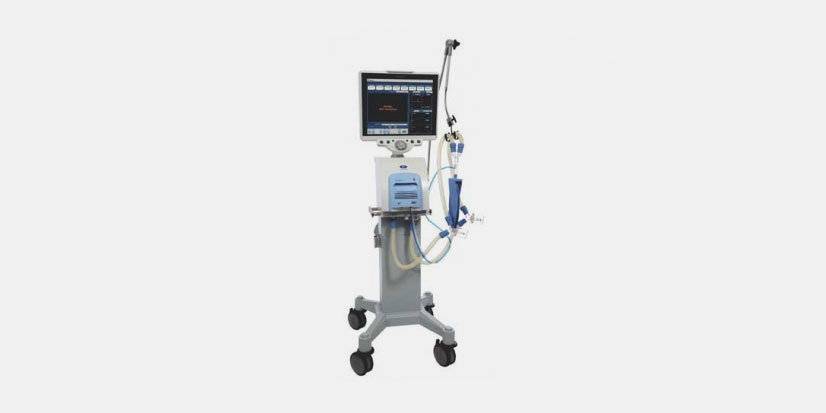After a long and tiring run on the beach, halt for a minute and order your brain to stick to your normal respiration mode. The default breathe-in and breathe-out process won’t be that easy in that situation. This is because now your body requires more oxygen. Your nostrils are not enough for the abundance of oxygen as per your lungs demand. Here, the demand has already exceeded the supply. Making up for that, your mouth desperately tries to remain open so that it can help your lungs by inhaling more oxygen. Now, forget the beach run. Imagine a situation, where both your nostrils and the mouth are not enough to provide the required oxygen to your lungs. The oxygen needed as a fuel for your normal body function is now not inhaled as you are unable to breathe or breathing insufficiently. This is mainly due to the improper functioning of your respiratory system, may or may not due to a physical injury. These are the times where you need a special tool for the normal respiratory process. That device should be able to move the required amount of breathable air in and out of your lungs. They already exist and they are called Ventilators.
Over the past decade, the art of ‘Controlled breathing’ has evolved and it slowly moved from the theory quadrant to the practical implementation quadrant of healthcare. The process called mechanical ventilation shares a close bond with ‘controlled breathing’, and without a doubt, this concept has cemented a prominent place in the critical care sector of healthcare. Also, the principles of this art found its place in the curriculum of pulmonologists and respiratory therapists. The advent of cutting-edge innovations in this sector with faster real-time computing abilities and minimization of the robust machines allowed the mechanical ventilators to reserve a place at the bedside of the critically-ill patients as critical care ventilators.

Medical Science evolves and this evolution enables the critical care Ventilators also to evolve as they are now a prominent part of it. From tracheostomy tubes to trailblazing ventilation with protective features like built-in alarms and additional features like interactive displays made the critical respiratory care, a simple and more reliable one. However, their core function remains the same. That is to ensure adequate gas exchange – inhaling Oxygen and eliminating Carbon dioxide.
Predominantly, a simple and holistic critical care ventilator consists of a compressible air reservoir or turbine, oxygen supplies and a pair of valves & tubes. The flow-valve needs to be adjusted to allow the required amount of oxygen to pass through the ventilator to the patient body. The parameters for this are based on the medical condition of the patient. The same logic applies even if turbines are used. The tricky thing is the exhalation of carbon dioxide. It will be released usually through a one-way valve that doesn’t entertain inhalation. Given this simple operational detail, the ventilator can be modified and made into a more efficient one by adding customized cutting-edge features like patient monitoring (in case the patient faces a difficult situation) and alarm systems (alerts when there is a malfunction on the ventilator system such as air leakage, power failure, etc.,) Backup batteries, robust oxygen tanks, remote controlled systems are also a part of modern ventilator systems. They are mostly controlled electronically by a small embedded system, tailor-made for the critical life care arena.

This critical care ventilator system is available in two types – invasive and non-invasive. Invasive is meant for extremely critical conditions where the patient’s respiratory system is non-functional and they are in need of aided breathing 24×7. The non-invasive type is meant for selected conditions like sleeping, critical surgeries, etc. Only on these times, the patient may require additional breathing support and the non-invasive ones do the same. However, in some cases, even the non-invasive one becomes the permanent solution to normal breathing. The non-invasive type comes with a nasal mask for controlled breathing.
Irrespective of the additional and advanced features in the ventilator systems, they all should adhere to the strict regulations more than any other advanced medical equipment. This is because a small failure in the ventilation system may result in a catastrophe. Several precautions should be taken before placing a patient in ventilation. Power supply to the ventilator is one among those precautions and it should be there irrespective of the conditions in the critical life care unit. In case of failures, the Ventilators should possess backup mechanisms like hand-driven respiration. The closed safety valves attached to the tubes should open and intake the atmospheric air to cope up with the loss of connected oxygen supply. It should act against the suffocation of the patient at any cost. Air-compressors, gas tanks and backup batteries are sometimes mandatory when the ventilator systems are placed at the bedside of a critically-ill patient.
When it comes to the patients under home care, a portable ventilator (it can be moved anywhere easily) becomes the obvious and ideal choice. Even in hospitals, they can be moved from one place to another, one lab to another, along with the bed of the critically-ill patients. Know about our offerings in terms of Ventilators by clicking here.


